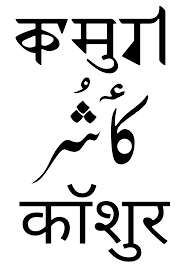Language/Kashmiri/Grammar/Gender
Hi Kashmiri learners! 😊
In this lesson, we will discuss the topic of Gender in the Kashmiri language. Understanding the concept of gender is important as it helps you to form proper sentences and convey proper meaning.
Introduction
The gender system in Kashmiri is similar to other Indo-Aryan languages. In Kashmiri, there are two genders: masculine (for males) and feminine (for females). Unlike English, Kashmiri nouns have inherent gender i.e., their gender is fixed and cannot be changed. So, when you use a noun in a sentence, you must use the appropriate gender.
For example, the word 'father' is masculine in Kashmiri, and the word 'mother' is feminine. If you want to say "My father is a doctor," you would say "My father (masculine) is a doctor," while if you want to say "My mother is a doctor," you would use the feminine form of 'doctor.'
Masculine Gender
Masculine nouns in Kashmiri have a characteristic '-as' ending. Here are some masculine nouns along with their English translations:
| Kashmiri | Pronunciation | English |
|---|---|---|
| Baab | bɑːb | Father |
| Seer | seər | Head |
| Rang | raŋ | Color |
| Kor | kɔr | Sun |
Here is an example of a conversation using masculine nouns:
- Person 1: "Baab (Father), where is Seer (Head)?"
- Person 2: "Rang (Color) of Seer (Head) is black."
Feminine Gender
Feminine nouns in Kashmiri have a characteristic '-yi' ending. Here are some feminine nouns along with their English translations:
| Kashmiri | Pronunciation | English |
|---|---|---|
| Maadh | mɑːd | Mother |
| Nang | næŋ | Beauty |
| Samang | săməŋ | Evening |
| Haenz | hen̪z̪ | Goose |
Here is an example of a conversation using feminine nouns:
- Person 1: "Maadh (Mother), where is Nang (Beauty)?"
- Person 2: "Samang (Evening) is the time of Nang (Beauty)."
Masculine and Feminine Verbs
The gender of the noun determines the gender of the verb used in a sentence. Masculine verbs have a characteristic '-un' ending, while feminine verbs have a '-na' ending. Here are some examples:
| Noun | Pronunciation | Masculine Verb | Feminine Verb |
|---|---|---|---|
| Baab | bɑːb | bevun | lekna |
| Maadh | mɑːd | bevun | lekna |
As you can see, both 'Baab' (Father) and 'Maadh' (Mother) use the same verb 'bevun' in their masculine form. Similarly, they use the same verb 'lekna' in their feminine form.
Here is an example of a conversation using verbs:
- Person 1: "Tuhin dhekhun kya? (What do you see?)"
- Person 2: "Mein Srinagar (Kashmiri city) ko bevun (see) saku. (I can see Srinagar.)"
Common Gender
Some nouns in Kashmiri are considered as having a 'common gender' i.e., they can be both masculine and feminine depending on the context. Common gender nouns end with '-i.' Here are some examples:
| Kashmiri | Pronunciation | English |
|---|---|---|
| Kani | kæni | Ear |
| Wani | wæni | Lip |
| Tani | tæni | Thread |
Here is an example of a conversation using a common gender noun:
- Person 1: "Kani (Ear) and Wani (Lip) are red."
- Person 2: "Tani (Thread) of our flag is green."
Conclusion
In conclusion, Kashmiri has a two-gender system that is important to understand to properly form sentences. Remember that the gender of a noun is inherent and cannot be changed, and it determines which verb form you will use in a sentence.
To improve your Kashmiri Grammar, you can also use the Polyglot Club website. Find native speakers and ask them any questions!
Sources
Related Lessons

